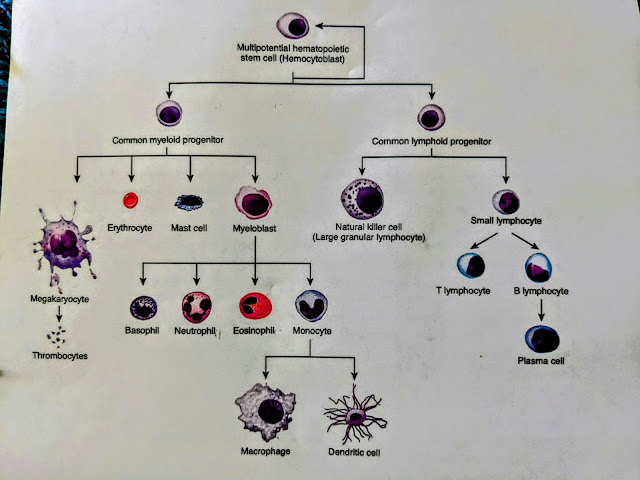It’s been an eventful week, she's checked
into the hospital,
and we’re on the final
countdown to cell transplantation Aug 1.
But first, the highlights from last week. It
was a pretty good week.
The data review conference was the
highlight. Her care team reviewed
with Kristina all
the cumulative
diagnostic test results that were required in
order to push the ‘go’ button on the transplant. That
button was pushed, she’s cleared for take off.
There were a couple of things, one of which was a heart murmur which she
thought she had grown out of, but it’s a ‘trace’ and really not a concern. She also
had pneumonia in the
hospital last time and she didn’t even know she had it. There’s
some residual lung issues, but not significant enough to stop
the transplant. She did have a couple of
minor symptoms (intermittent sore throat and some diarrhea) which caused a few
more tests, including a last minute chest CT
scan.
If there was a low light, it was an extensive interview on
Kristina’s extensive travel. Questions of her recent trip to Peru & if she was in the Amazon.
And even area's & beaches she visited while in Sri Lanka just before Covid
hit. As a result, in an abundance of caution, they put her on ivermectin, which came as a
shock to her (flipping stunned were her words).
Last week she had 4 bags of blood, 3 reds and 1 platelet, as well
as 1 additional platelet bag very early this morning in her hospital room. Despite
that her blood levels aren’t good. Her
neutrophil count was 0.01 (10) and her platelet counts are falling as well and
her ‘crit’ level hasn’t maintained despite the transfusions. She
thinks something isn’t right and has chalked it up to the ‘mild’ dose of
Vidaza, the maintenance medicine used for MDS patients. She’s
25 days
since her last dose, and her levels aren’t great. Vidaza is
typically a 28 day cycle..
Her team is isn’t too concerned, but Kristina is a bit – more
so about her cell recovery after her current round of Transplant chemo.
One more bit of news – Kristina is CMV negative, but her donor is
CMV positive. The
matching process isn’t perfect. The
primary matching points don’t even cover CMV – Unfortunately it’s
part of a secondary screening
stage of the donor.
You may be asking yourself 'what, exactly, is CMV'? It's a virus that infects roughly 100% of folks in Africa and Asia and up to 80% of people in the US. If 10 people are ready this right now, odds are that 7 or 8 of you have it. Without knowing it. It lies dormant most of the time. It's in the herpes family of viruses, but isn't herpes nor is it considered an STI. It usually isn't a thing. Unless you become immunocompromised, then it can attack the kidneys, retinas, and become pretty serious. It's one of those things to worry about, but likely won't be a problem. Until it is.
It can be a problem in young children, and it is similar to mononucleosis. From the description of the systems (general malaise) one could suffer from acute CMV but never really connect the dots. For Kristina it's another thing to be concern with but is outside her control. If she's healthy, it won't impact her, but in the future, if she becomes immunocompromised, it could cause health issues. For right now, it's a 'tomorrow problem'.
She did follow up on the donor process and they went through 5
donors, some were unavailable, one was pregnant, etc – so they landed on the 6th donor
– despite the CMV positive status.
So while not perfect, the donor has already had his stem
cells collected and Kristina is now on her 3rd day of the transplant chemo
cocktail. She is walking laps around the transplant floor and receiving IV
hydration & additional prophylactic med's daily. Things are
moving forward.
Kristina is feeling pretty good – or at least better. She’s
gained a little bit of
weight back and she was gaining some strength. But
not as much as she’d like. She’s
still exhausted and the fatigue level is a thing. She knows what’s in
store and feels only marginally ready for the challenges ahead.
But psychologically she’s at the point of ‘let’s get this done’.
Kristina is back at UW Medical
Center, the main Montlake campus, diagonally across from Husky Stadium. To
visit, take the Cascade wing elevators to 8NE floor, rm # 8240 & sign-in. The actual transplantation of
the stem cells takes place on August 1st. Please ping her, visit her, ask if
she craves any outside food. By all reports the hospital food is less than...
well, far beyond sub par, to put it gently. Oh, and no live flowers or plants.
All systems go, buckle up.











